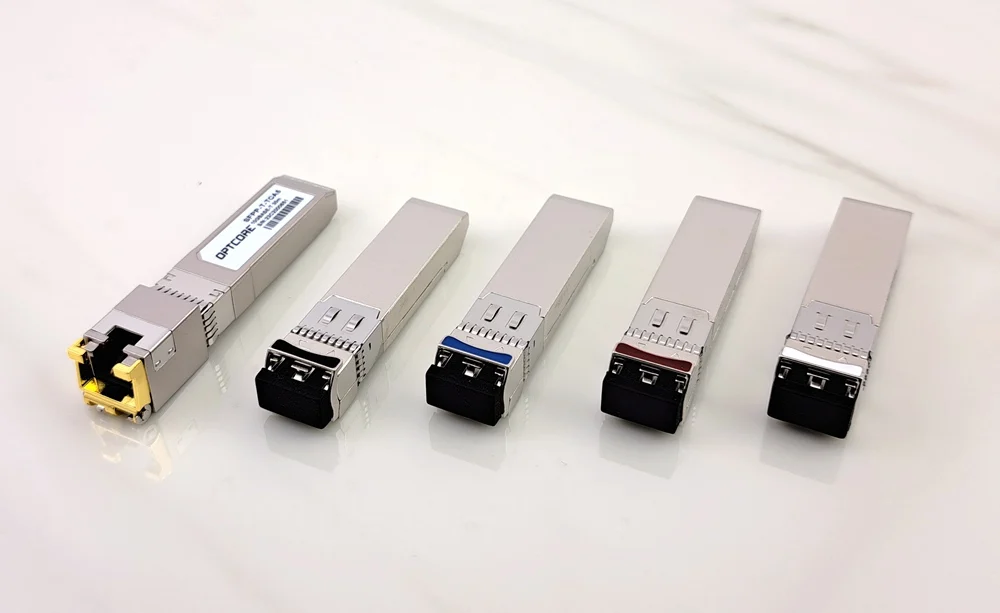Introduction:
In the world of networking, transceivers play a vital role in connecting devices and enabling data transmission. Small Form-Factor Pluggable (SFP), Enhanced Small Form-Factor Pluggable (SFP+), and Quad Small Form-Factor Pluggable 28 (QSFP28) are among the most popular transceiver modules used in modern networks. This article aims to provide an in-depth understanding of these transceiver technologies and their applications, as well as shed light on the significance of network switches in conjunction with transceivers.
Exploring SFP Transceivers: Compact and Versatile:
SFP transceivers, also known as Mini-GBIC (Gigabit Interface Converter), are compact and hot-pluggable modules widely used in networking applications. These modules support various data communication protocols, including Ethernet, Fibre Channel, and SONET/SDH. SFP transceivers are available in different types, such as SFP SX (short-range), SFP LX (long-range), and SFP CWDM (Coarse Wavelength Division Multiplexing), catering to specific network requirements. They offer flexibility and ease of deployment, making them ideal for both enterprise and data center environments.
Stepping up with SFP+: Unleashing Higher Bandwidth:
Enhanced SFP (SFP+) builds upon the success of SFP by delivering increased bandwidth and enhanced performance. SFP+ transceivers support data rates up to 10 Gbps and are commonly used in 10 Gigabit Ethernet applications. With their backward compatibility with SFP ports, SFP+ modules offer a seamless transition from lower speeds to higher speeds, making them a cost-effective solution for network upgrades. SFP+ modules are available in various options, including SFP+ SR (short-range), SFP+ LR (long-range), and SFP+ ER (extended-range), enabling flexibility in network design.
Introducing QSFP28: Powerhouse of High-Speed Connectivity:
Quad Small Form-Factor Pluggable 28 (QSFP28) transceivers represent the latest advancement in transceiver technology, providing blazing-fast data rates of up to 100 Gbps. Designed for next-generation networks, QSFP28 modules are used in high-density applications, such as data centers and cloud environments, where bandwidth demands are exceptionally high. These modules can be deployed in various configurations, including QSFP28 SR4 (short-range), QSFP28 LR4 (long-range), and QSFP28 CWDM4 (Coarse Wavelength Division Multiplexing). QSFP28 offers unparalleled speed and scalability, enabling efficient data transmission in bandwidth-intensive environments.
Unleashing the Potential with Network Switches:
While transceivers play a crucial role in enabling connectivity, network switches act as the backbone of modern networks. A network switch facilitates the interconnection of devices by providing multiple ports to connect transceivers. Switches are available in different configurations, ranging from basic unmanaged switches to advanced managed switches with sophisticated features like VLANs, QoS, and link aggregation. Network switches ensure efficient data forwarding, enhance network performance, and enable seamless communication across connected devices.
Conclusion:
Transceivers, including SFP, SFP+, and QSFP28, are key components in modern networking, offering versatile connectivity options and high-speed data transmission capabilities. Whether you need compact and flexible SFP modules or require enhanced performance with SFP+ or QSFP28, these transceivers cater to diverse networking needs. Alongside transceivers, network switches play a vital role in interconnecting devices and optimizing network performance. Understanding the capabilities of transceivers and network switches

